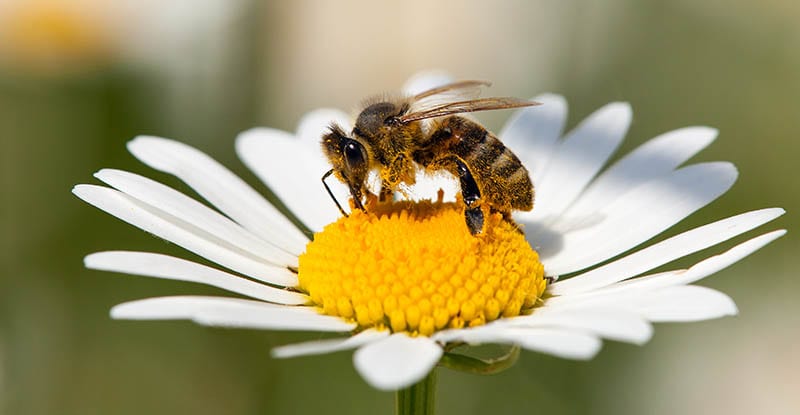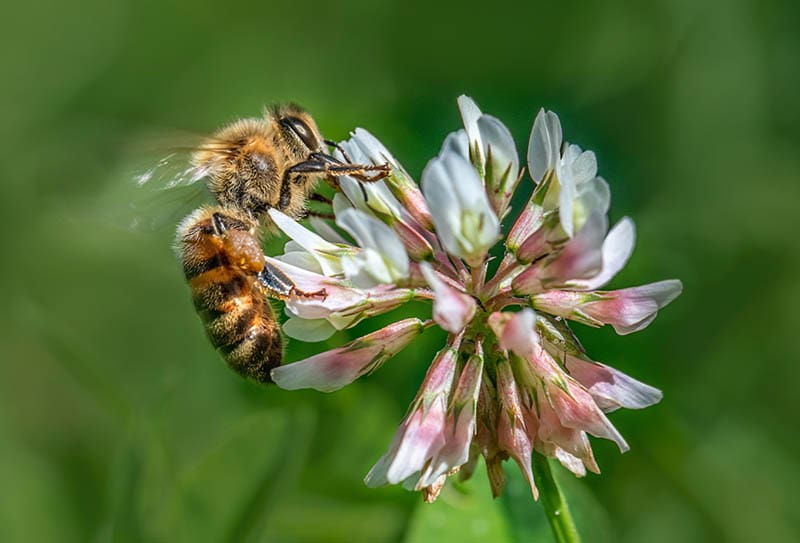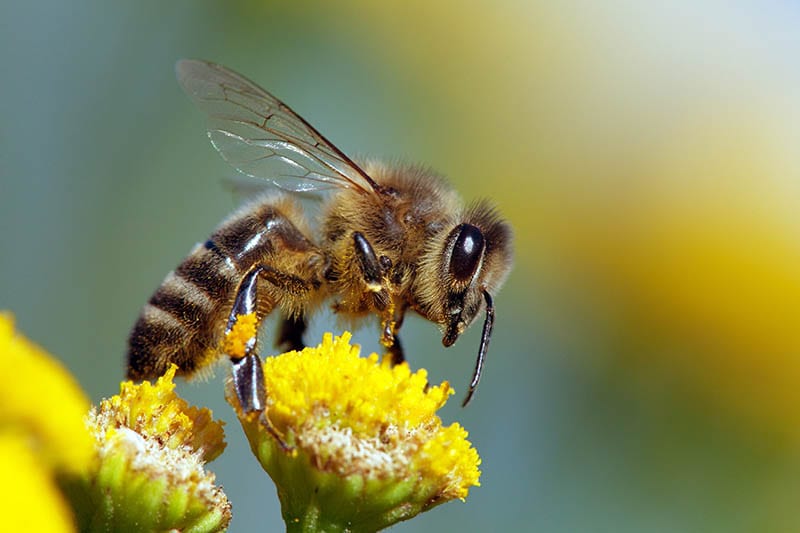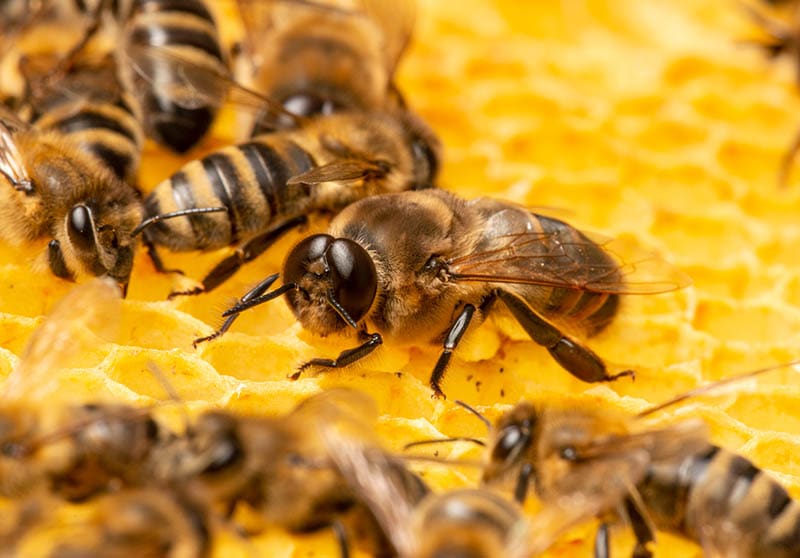What Is the State Insect of Mississippi? Symbolism & History
-
Pete Ortiz
- Last updated:

You can take off points for lack of originality, but Mississippi did justice to what most people consider nature’s most critical creature when it became the 12th state to name the honeybee its official insect.
An essential aspect of both a thriving plant world and Mississippi’s economy, the honeybee undoubtedly earned the honor. Let’s find out why Mississippians revere this humble yet hardworking pollinator and how they play a part in the state’s culture.
Why Is the Honeybee Mississippi’s State Insect?
The Mississippi legislature designated the European honeybee (Apis mellifera) as its state insect in 1980. The declaration appears in Chapter 317 of the General Laws of Mississippi.
The Mississippi Entomological Association partnered with the Mississippi Beekeepers Association to choose the state insect. The honeybee beat out the other finalists, the boll weevil and the fire ant, due to its contributions to agriculture and humanity in general.
Honeybees are vital as pollinators. High pollinator density improves agricultural yields. With almost 75% of crops needing these outside forces to flourish, they play a critical part in global food security. We owe nearly 100 of the world’s most popular crops and about 35% of the country’s agricultural land use to pollinators.
Without the honeybee’s hard work, global access to nutrient-rich fruits and vegetables would plummet. And because pollinator-dependent crops have increased several times in the last half-century, the bee’s importance is more significant than ever.

Honeybees in America
The non-native European honeybee came to America in the early 1600s, spreading to the west coast over the following two centuries. Human and honeybee interdependence during these years propelled the success of both parties.
Honeybees helped propagate European plant species ahead of human advancement across the continent. Meanwhile, humans helped honeybees through their agricultural practices and provided shelter and transportation for these beneficial bugs.
Interestingly, this symbiotic relationship between man and honeybee cast the insects in an unfavorable light for Native Americans. Native tribes generally saw the non-native insect as a warning of incoming settlers. Like other non-native plant and animal species, the honeybee earned a negative moniker connecting it to European colonialism—the “white man’s fly.”
Over the centuries, beeswax, propolis, and honey trades emerged. Today, America produces $321.22 million of honey, with honeybees pollinating $15 billion worth of crops. The country contains more than 2.7 million honeybee colonies, which produced nearly 1.5 million pounds of raw honey in 2020.
Honeybees in Mississippi
Mississippi isn’t a leading honey-producing state, but honeybees have been an integral component of its economy for generations of beekeepers. The Mississippi Beekeepers Association, the state’s oldest agricultural group, has roots dating to the 1870s. By the 1920s, Mississippi’s commercial beekeeping and honey production led the nation.
Other states got in on the action over the ensuing decades. Currently, Mississippi doesn’t come close to matching the production capacity of states like North and South Dakota. But although it ranks in the lower half among all states in honey production, appreciation for the honeybee’s critical role across the state is as strong as ever.

Mississippi Honey Production
Mississippi’s bee farms produced 1.83 million pounds of honey between 25,000 colonies in 2020, a 4% increase from the prior year. The colony count jumped by over 3,000. The total value of the state’s honey production was more than $3.5 million, an 8% increase from the previous year.
Mississippi’s production can’t touch North Dakota’s 28.33 million pounds of honey, but the recent increases have highlighted the state as a thriving haven for a struggling species. Honeybee colonies swelled by 34.3% from 2021–2022, the fourth-largest increase in the country. Populations have been on the uptick in the state since a 10-year low in 2015 of around 15,000 colonies. In 2022, the total colonies in the state sit at roughly 47,000.
Mississippi’s Importance to Bees
While the upward trends in Mississippi’s beekeeping communities may not last forever, the state will always be a crucial home for bee populations. The warm year-round weather allows bees to remain active throughout the entire year. When they’re not producing honey, bees become critical for farming practices. Mississippi beekeepers generated over $500,000 in revenue in 2017 from pollination services alone.
And Mississippi’s beekeepers and farmers aren’t the only ones taking advantage of the climate. Many of the nation’s premier honey-producing northern states have intrinsic ties to the area. As the weather turns in the winter, beekeepers transport bees to Mississippi to ensure their survival and growth. In 2018, the Hospitality State accepted nearly 10,000 transitory colonies during the colder months.

 In Conclusion
In Conclusion
Mississippi’s rich community of hobbyists and commercial beekeepers represents a deep history of admiration for the state insect. As phenomena like Colony Collapse Disorder become less mysterious, those in power are taking action. Recent moves like stewardship programs, legislation to combat disease, and partnerships between beekeepers and farmers are only a few of the countless ways that Mississippi is protecting its pollinators. If the recent numbers offer any indication, it seems to be on the right track.
Featured Image By: Daniel Prudek, Shutterstock
Contents


